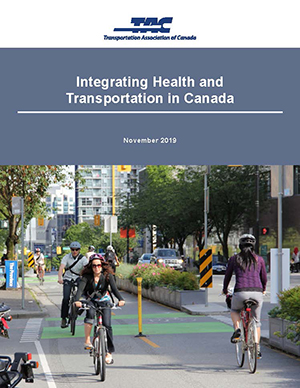Traditionally, transportation systems have been designed for motorized vehicles to move people, goods and services efficiently. Excluding more active and sustainable modes of travel from these systems in meaningful ways has often influenced Canadians to use motorized vehicles.
The design of transportation systems and land use can help achieve public health goals such as increased physical activity, reduced chronic diseases, and reduced exposure to air and noise pollution. Good health can be facilitated or negatively impacted by transportation policies, plans, analyses, funding levels, and infrastructure design decisions – all of which impact the relative safety, efficiency, costs, and overall desirability and relative utility across modes of travel. As a result, the potential health consequences of transportation decisions and land use actions are a growing part of the fields’ lexicons.
Integrating Health and Transportation in Canada:
- Provides a review of literature and best practices on the topic;
- Describes input provided by practitioners about knowledge and resources needed;
- Describes the methodology used to develop recommendations for improvement; and
- Provides, for each recommendation, resources related to the champions, preliminary actions and challenges identified.
The Transportation Association of Canada (TAC) gratefully acknowledges the project funding partners of Integrating Health and Transportation in Canada that provided financial support to both develop the report and distribute the final publication. These partners are listed in the document’s Acknowledgements.
Download the technical appendices (pdf) →
Disponible en français : Intégration de la santé et des transports au Canada (2019)


